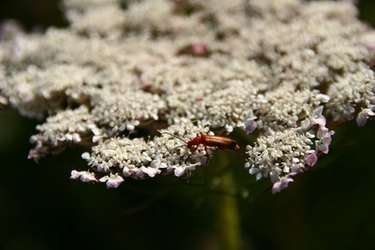
Water plants add beauty, nutrients and oxygen to backyard ponds or water features, but choose your plants carefully, especially if small children or pets will be near the area. Some water plants commonly used in home landscapes are toxic. Most will cause varying degrees of physical discomfort, but a few of them are poisonous enough to kill adults and large animals.
Water Lettuce
Video of the Day
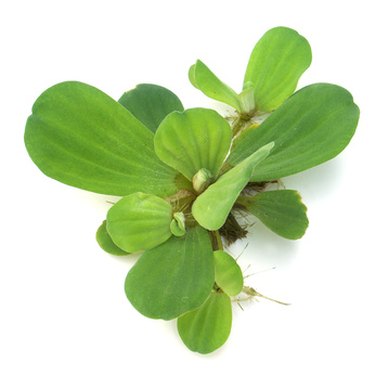
Water lettuce (Pistia stratiotes) is a floating water plant with pale green leaves, which grow in a spiral pattern from the center of the plant. The leaves grow to about 6 inches in length, and feature deep ridges or depressions. Water lettuce is an aggressive surface grower, which can kill fish by depleting oxygen.
Video of the Day
The leaves contain poisonous calcium oxalate crystals, which can cause illness when ingested or chewed, especially by small animals and children. Symptoms include swelling and severe burning of the throat, lips and tongue, vomiting, nausea and diarrhea. In severe cases, the throat can swell to the point of causing respiratory failure. Water lettuce is considered an invasive pest species along the eastern seaboard, through the southern United States, and into Texas, Arizona and California.
Lily of the Valley
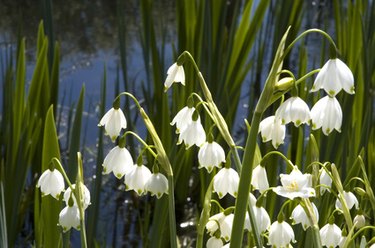
The lily of the valley (Convallaria majalis), features small, bell-shaped, sweet-smelling flowers. It is usually used in edge planting around water features or ponds, and is often found in cut-flower arrangements in the home. Ingestion of any part of the plant can cause serious illness or death, particularly in small animals or children. Almost immediate vomiting usually limits the amount of toxins absorbed, but eating large amounts of the plant, or drinking vase water can result in abdominal pain, vomiting, diarrhea, slow or irregular pulse, burning of the mouth and throat, dizziness, dilated pupils, clammy skin, coma, circulatory or heart failure. Most poisonings in children result from ingesting small red berries produced by the plant, according to Cornell University.
Water Hemlock
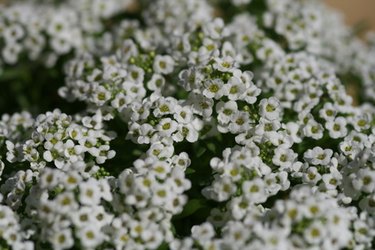
Water hemlock (Cicuta maculata) is the most toxic plant that grows nearly everywhere in North America. Only a small amount of the plant's poison is necessary to kill humans or animals as large as livestock. The toxin directly attacks the central nervous system, causing nausea, violent convulsions, grand mal seizures and death.
Water hemlock features small, white flowers that grow in umbrella-like clusters, and is often mistaken for the similarly shaped wild carrot plant, or 'Queen Anne's Lace,' according to Ohio State University. The roots of water hemlock contain the poison, which is released when a plant's stem is cut or broken.
Swamp Lily
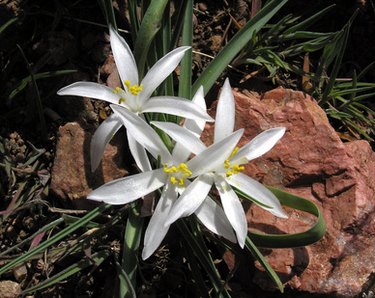
The swamp lily (Crinum americanum) grows wild in marshes, swamps and along river banks across the southern United States from Florida to Texas. This perennial plant spreads quickly and produces white flowers with six petals. Due to its aggressive tendencies, this water plant can form heavy clusters that interfere with oxygen and sunlight levels in standing water features, leading to fish kills. Carefully consider whether to use this water plant because all parts are poisonous and can cause abdominal pain, nausea and vomiting and diarrhea if ingested.